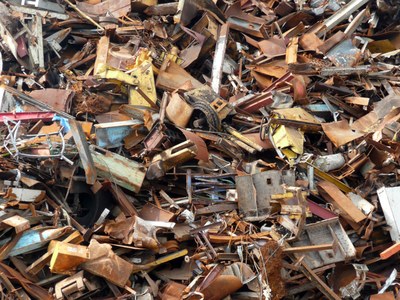Environmental Problem Targeted
The EU’s economy uses 16 tonnes of materials per person per year, of which 6 tonnes become waste, half of it going to a landfill. Altogether, the EU produces up to 3 billion tonnes of waste every year. All this waste has a huge impact on the environment, causing pollution and greenhouse gas emissions that contribute to climate change, as well as significant losses of materials.

Municipal solid waste (MSW) generation continues to grow both in per capita and overall terms. Although disposal of this waste in landfills has decreased in the last decade, it is still the most common option for waste management in most EU countries. However, landfills cause a large impact on the environment, generation of leachates being one of the most important causes. Leachates are highly polluted waters generated by the organic matter decomposition and the excess rainwater percolating through the waste layers in a landfill. A combination of physical, chemical and microbiological processes in the waste transfers pollutants from the waste material to the percolating water. Leachates usually contain large amounts of organic matter, ammonia, heavy metals, chlorinated organic compounds, inorganic salts and other pollutants depending on the characteristics of the disposed waste. Therefore, landfill leachate is a heavily polluted liquid whose release into the environment must be avoided and is, in fact, strictly forbidden by many regulations. Unless appropriately managed or treated, leachates will cause harmful effects on the groundwater and surface water surrounding a landfill site, being also a serious risk to public health.
 An average municipal landfill site can produce up to 150 m3 of leachate a day, which equates to the amount of fresh water that an average household consumes in a year. Therefore, management and treatment of landfill leachates is one of the most extended and important environmental issue related to waste management. The conventional treatments of landfill leachates are based on biological processes and chemical and physical methods. Although they are usually suitable for young to intermediate leachates, with the continuous hardening and the ageing of landfill sites, they are not sufficient anymore to reach the level of purification needed in the old landfill leachates due to their low BOD5/COD relation.
An average municipal landfill site can produce up to 150 m3 of leachate a day, which equates to the amount of fresh water that an average household consumes in a year. Therefore, management and treatment of landfill leachates is one of the most extended and important environmental issue related to waste management. The conventional treatments of landfill leachates are based on biological processes and chemical and physical methods. Although they are usually suitable for young to intermediate leachates, with the continuous hardening and the ageing of landfill sites, they are not sufficient anymore to reach the level of purification needed in the old landfill leachates due to their low BOD5/COD relation.
Nowadays, filtration through membranes and evaporation technologies are the most used technologies to treat the old landfill leachates. These processes are based on separation of water from the leachate producing a permeate stream which can be directly discharged and a lower volume of concentrate stream which is highly concentrated and contains the majority of the contaminants. This concentrate stream must be further treated by a) transportation to an incineration plant equipped for the burning of hazardous liquid waste, b) solidification/inertisation with several materials and landfill disposal or c) reinjection into the landfill. The reinjection option helps degrading the organic matter present in the concentrate but just delays the problem of concentrate handling. Incineration and inertisation are the only options for concentrates, but these processes require a high amount of energy and chemicals which result in a very high environmental impact and produce large quantities of alkaline gases that must be neutralized. Furthermore, the stabilised solid must be disposed into the landfill, increasing the total area taken up with landfills, hence increasing the environmental impact of waste disposal.
Other technologies, such as advanced oxidation processes (AOP), are starting to be implemented to treat low biodegradable leachates. The main drawback of these processes is their high energy and reagents consumption which also results in a high environmental impact in categories such as climate change. With a view to meeting the requirements of the WFD, it is essential to develop and demonstrate innovative technologies and procedures, to prevent or reduce negative effects on the environment as far as possible. The Landfill Waste Directive (LWD, 1999/31/EC) also states that the total leachability and pollutant content of the waste and the ecotoxicity of the leachate must be insignificant, and in particular not endanger the quality of surface water and/or groundwater.
RELEACH project aims to demonstrate the feasibility of an innovative treatment scheme for landfill leachate treatment based on membrane technologies in order to decrease the environmental impact of leachate treatment in landfills and the overall environmental impact of waste disposal. This technology will be able to reach higher water recovery rates, while decreasing the generation of concentrate and the specific energy and chemical consumption required in the whole leachate management process. Furthermore, the process will use regenerated nanofiltration and reverse osmosis membranes from desalination systems, which not only will involve important savings on the membrane costs, but will also suppose a reuse for old membranes that have finished their useful life, reducing the carbon footprint and the fossil resources consumption, being in total accordance with the priorities stated in the Waste Framework Directive. The process will be specially focused on old landfill leachate treatment and will provide several environmental and economical advantages compared with the currently applied technologies, being in total accordance with the above mentioned European and Spanish policies and directives.



